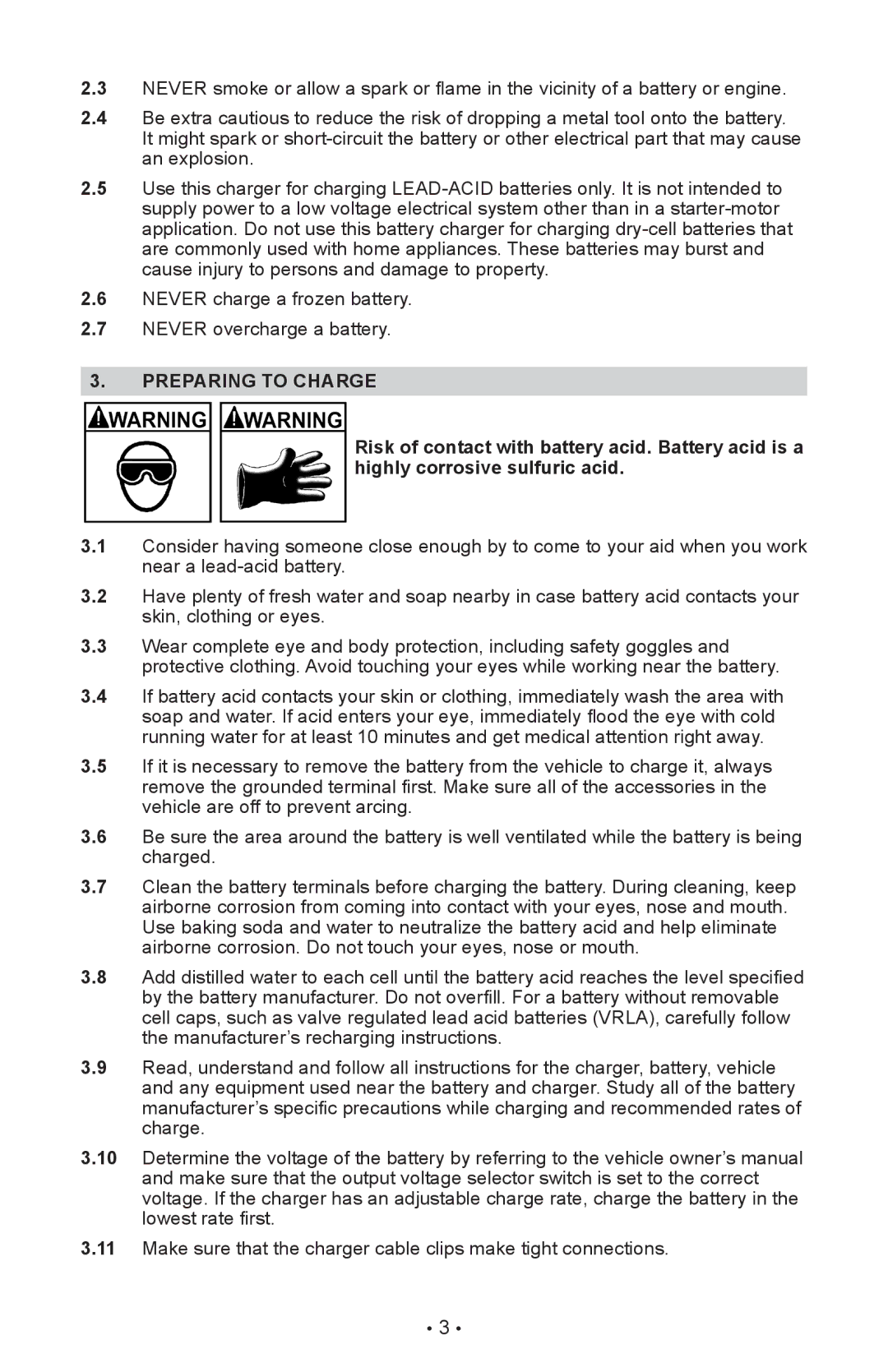
2.3NEVER smoke or allow a spark or flame in the vicinity of a battery or engine.
2.4Be extra cautious to reduce the risk of dropping a metal tool onto the battery. It might spark or
2.5Use this charger for charging
2.6NEVER charge a frozen battery.
2.7NEVER overcharge a battery.
3.PREPARING TO CHARGE
Risk of contact with battery acid. Battery acid is a highly corrosive sulfuric acid.
3.1Consider having someone close enough by to come to your aid when you work near a
3.2Have plenty of fresh water and soap nearby in case battery acid contacts your skin, clothing or eyes.
3.3Wear complete eye and body protection, including safety goggles and protective clothing. Avoid touching your eyes while working near the battery.
3.4If battery acid contacts your skin or clothing, immediately wash the area with soap and water. If acid enters your eye, immediately flood the eye with cold running water for at least 10 minutes and get medical attention right away.
3.5If it is necessary to remove the battery from the vehicle to charge it, always remove the grounded terminal first. Make sure all of the accessories in the vehicle are off to prevent arcing.
3.6Be sure the area around the battery is well ventilated while the battery is being charged.
3.7Clean the battery terminals before charging the battery. During cleaning, keep airborne corrosion from coming into contact with your eyes, nose and mouth. Use baking soda and water to neutralize the battery acid and help eliminate airborne corrosion. Do not touch your eyes, nose or mouth.
3.8Add distilled water to each cell until the battery acid reaches the level specified by the battery manufacturer. Do not overfill. For a battery without removable cell caps, such as valve regulated lead acid batteries (VRLA), carefully follow the manufacturer’s recharging instructions.
3.9Read, understand and follow all instructions for the charger, battery, vehicle and any equipment used near the battery and charger. Study all of the battery manufacturer’s specific precautions while charging and recommended rates of charge.
3.10Determine the voltage of the battery by referring to the vehicle owner’s manual and make sure that the output voltage selector switch is set to the correct voltage. If the charger has an adjustable charge rate, charge the battery in the lowest rate first.
3.11Make sure that the charger cable clips make tight connections.
• 3 •
